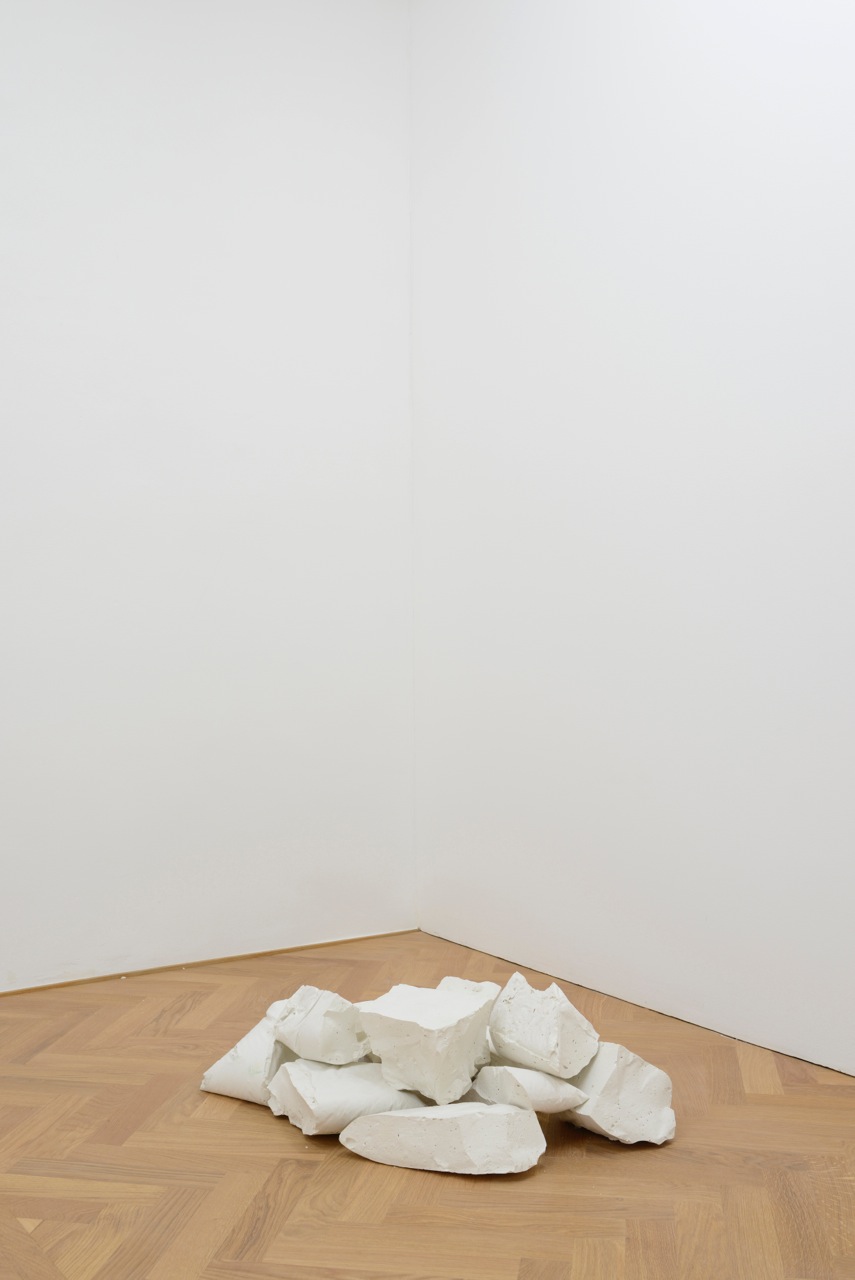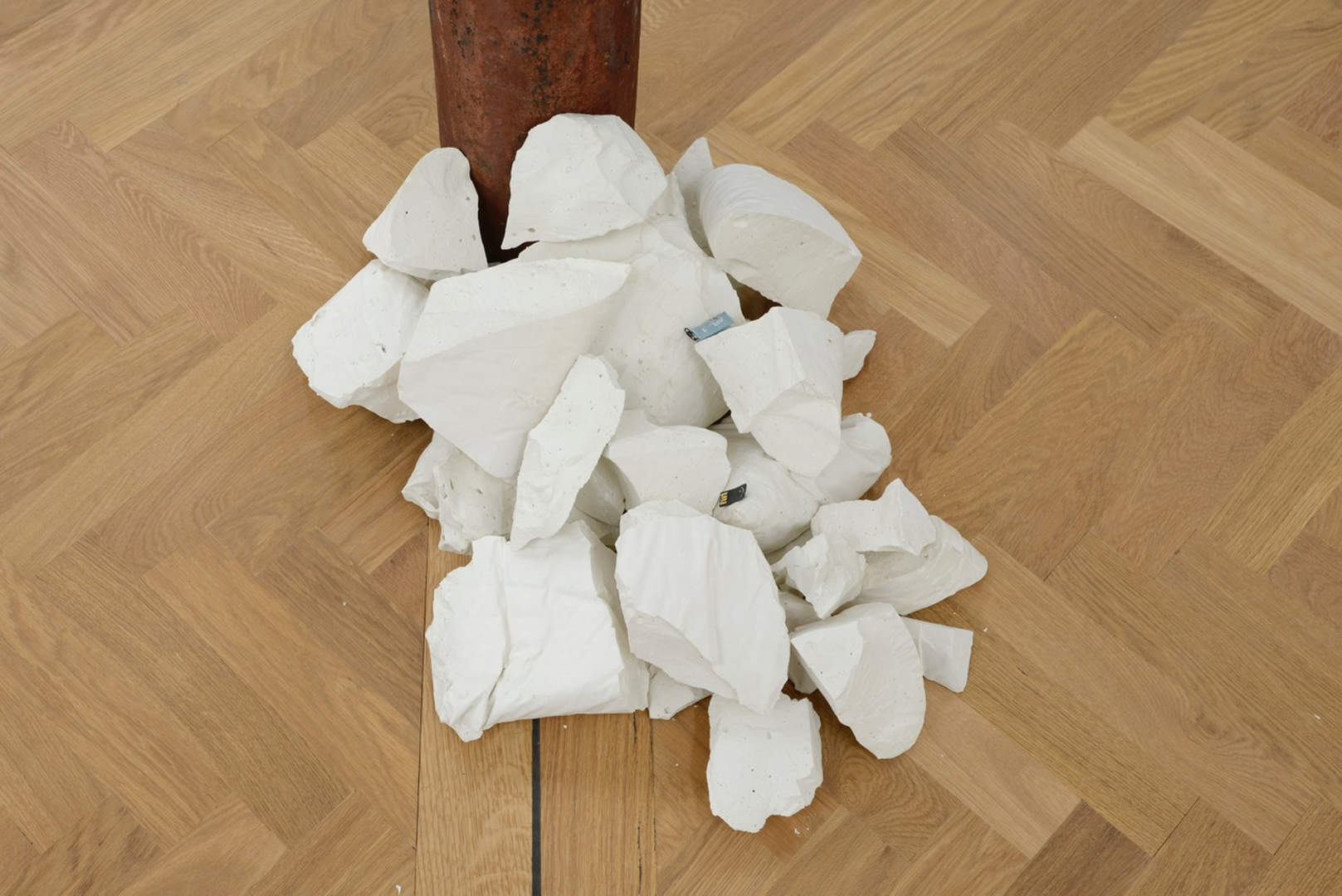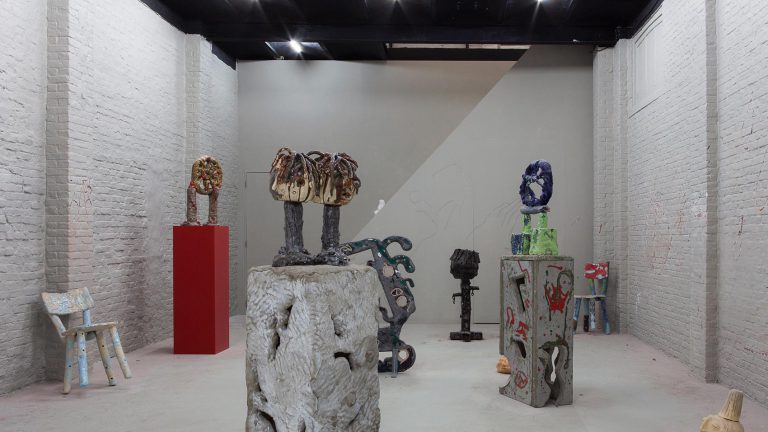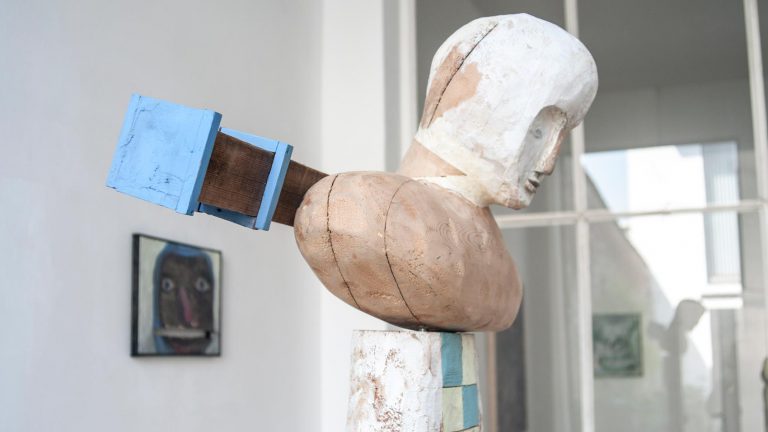
Artist: Hugo Scibetta
Exhibition title: What Do You Mean She Destroyed The Flash Drive ?
Venue: LEVY.DELVAL, Brussels, Belgium
Date: January 22 – March 7, 2015
Photography: Courtesy of Levy Delval
Most of the art we have access to of late comes from the many devices we rely upon on a daily basis.
Hugo Scibetta, born in 1991, takes this into account whilst analyzing his own practice. « I spend most of my time in front of a computer, thus I ingest a lot of images ». It was obviously a logical step for him to start working and showing online through platforms offered, among others, by Manuel Fernandez or Claudia Maté. The work took a new turn when Hugo got in touch with Olivier Laric’s online archive of the Lincoln Fundation. All the works of the Fundation are 3D modeled and available online, as an extensive digital archive.
« Yet, I was frustratred in front of these 3D models. The dynamic rotation couldn’t compensate for the lack of materiality. I had thus the idea of the Draped series, which was an attempt to add a texture to the objects, while it was paradoxically hiding them »
From this point on, most of his works are based on an interaction with the work of other artists, putting him into the role of a maker and of a beholder at the same time: a simple gesture that is not far from an augmented ready-made. « Behind my screen, I wasn’t only in touch with current artists’ works, but also with historical ones. »
This aptly describes the starting point of his monochrome series, where a detail of the painterly surface of an iconic artwork (such as Van Gogh’s « La Chambre ») becomes a flat, monochromatic picture. The striking thing is that after being processed and treated in such a way, it becomes almost impossible to re-photograph the image correctly, let alone see it on a screen.
The reproduced image stops its continuous reproduction.
As a continuation of this research, Hugo Scibetta is showing two new works at Levy.Delval. Images of artworks are disfigured by a blur effect pushing the original object up until its very limit, where it cannot be recognized at all. « This series offers to the visitor the skeleton of an image, where the image is almost impossible to grasp ».
The computer screen becomes a super-eye, like how the film camera was once considered: it permits the perception of many things at once; to zoom and to crop; and to apply multiple filters that give new inputs into well known works. In other words, it allows the bare eye to have access to a materiality that is usually out of its haptic reach.















